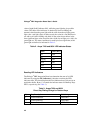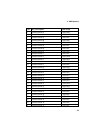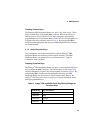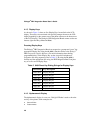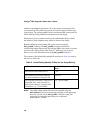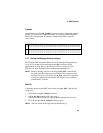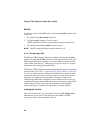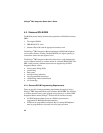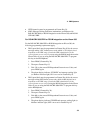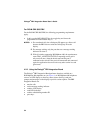Dialogic
®
PBX Integration Board User’s Guide
MWI Off
A technique to turn off the MWI in this switch, using dx_dial( ) with the dial
string, is to:
1. Go off-hook using dx_sethook( ) function.
2. Call the dx_dial( ) function. The dial string is
<ESCF><extension><ESCF> (optional pause character may be used).
3. Go on-hook using the dx_sethook( ) function again.
NOTE: <ESCF> means the Escape character followed by F.
4.1.8. Transferring a Call
The Dialogic
®
PBX Integration Board can transfer calls using the dx_dial( )
function. By using the dx_dial( ) function and the appropriate dial string, the
PBX Integration Board can transfer a call to any extension connected to the
switch. Refer to the Dialogic
®
PBX Integration Software Reference for more
information about dialing programmable keys.
The Dialogic
®
PBX Integration Board can perform both supervised and blind
transfers (refer to Sections
2.1. Supervised Call Transfer and 2.2. Blind Call
Transfer
). If a blind transfer is performed, the PBX controls where the call is
routed if the extension is busy or does not answer. If a supervised transfer is
performed, your application can implement call progress analysis and
called/calling number ID to intelligently control where the call is routed (by
completing or aborting the transfer) and what type of message is played if the
called extension is busy or does not answer. Because of this capability,
supervised transfer is a comparatively preferred call transfer method.
Initiating the Transfer
Once in a connected call, you can initiate a transfer with dx_dial(&,<ext>),
where & acts as a key press of the transfer key and <ext> is the PBX
extension to which you are transferring the call.
50



